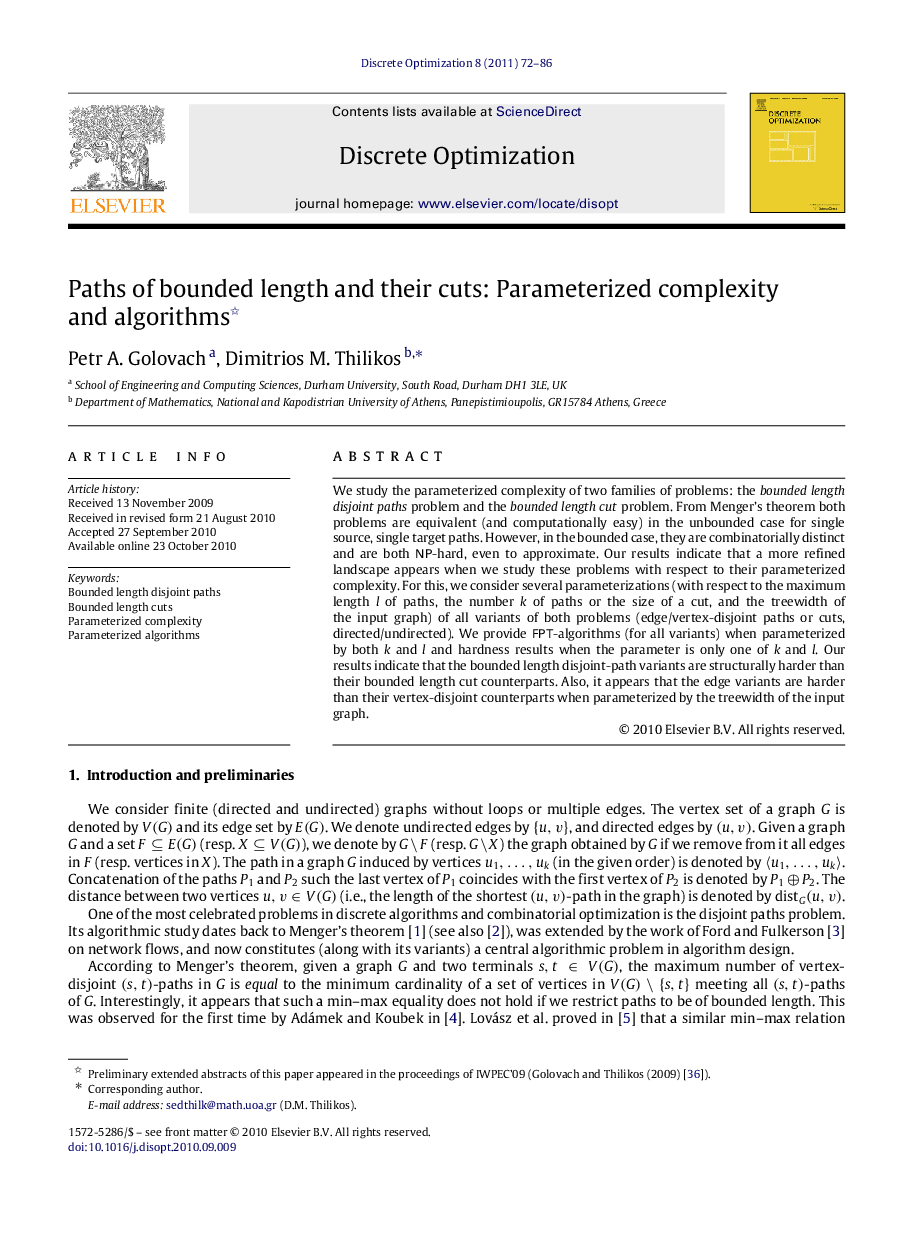| کد مقاله | کد نشریه | سال انتشار | مقاله انگلیسی | نسخه تمام متن |
|---|---|---|---|---|
| 1141536 | 957018 | 2011 | 15 صفحه PDF | دانلود رایگان |

We study the parameterized complexity of two families of problems: the bounded length disjoint paths problem and the bounded length cut problem. From Menger’s theorem both problems are equivalent (and computationally easy) in the unbounded case for single source, single target paths. However, in the bounded case, they are combinatorially distinct and are both NP-hard, even to approximate. Our results indicate that a more refined landscape appears when we study these problems with respect to their parameterized complexity. For this, we consider several parameterizations (with respect to the maximum length ll of paths, the number kk of paths or the size of a cut, and the treewidth of the input graph) of all variants of both problems (edge/vertex-disjoint paths or cuts, directed/undirected). We provide FPT-algorithms (for all variants) when parameterized by both kk and ll and hardness results when the parameter is only one of kk and ll. Our results indicate that the bounded length disjoint-path variants are structurally harder than their bounded length cut counterparts. Also, it appears that the edge variants are harder than their vertex-disjoint counterparts when parameterized by the treewidth of the input graph.
Journal: Discrete Optimization - Volume 8, Issue 1, February 2011, Pages 72–86